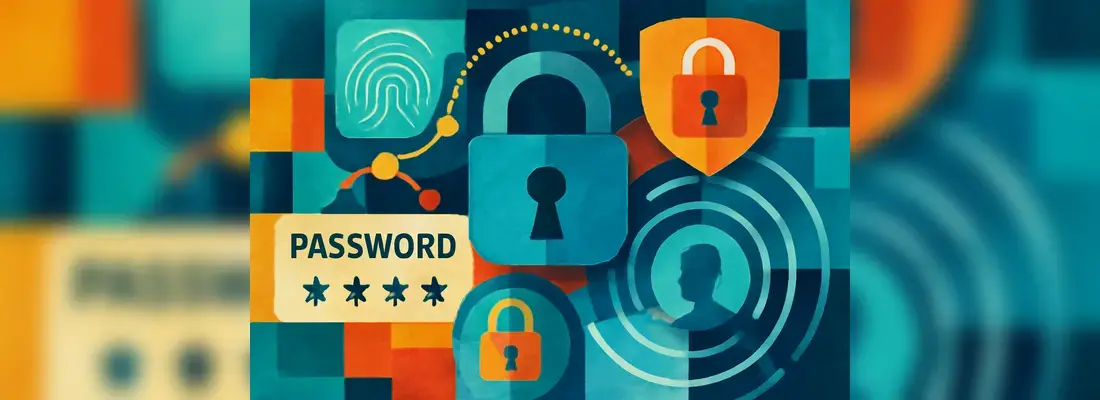The Role of Email Security in Protecting Businesses from Cyber Threats
Date: 6 May 2025
.webp?width=1170&name=Business_Email_Security_cropped%20(1).webp)
In the modern business environment, email is both indispensable and vulnerable. While it enables seamless communication, it is also a primary vector for cyber threats — from phishing scams and malware distribution to business email compromise (BEC). As attackers grow more sophisticated, businesses must strengthen their email security posture to avoid becoming the following cautionary tale.
Why Email Security Should Be a Strategic Priority
Cyber threats aren’t just a problem for IT teams — they’re a business-wide risk. That’s why email security should be viewed as a strategic priority, not just a technical one. After all, email is still the main way businesses communicate, share files, and make decisions. And because of that, it’s also one of the easiest ways for cybercriminals to sneak in.

Source: Mailmodo
Traditional spam filters and antivirus tools alone can’t keep up with today’s advanced attacks. Modern email threats are often highly targeted, well-crafted, and designed to look legitimate.
That’s why a smarter, multi-layered approach is essential.
Here are a few practical steps companies can take:
- Use Multi-Factor Authentication (MFA) – This simple step can stop many attackers in their tracks by adding an extra layer of protection during login, such as a code sent to a mobile device.
- Encrypt Sensitive Emails – If someone does intercept your message, encryption ensures only the intended recipient with the decryption key can read it.
- Train Your Team – The more your employees understand about phishing and other common tactics, the less likely they are to fall for them, especially when tested through regular simulations.
- Verify Who’s Sending What – Security tools like DMARC, DKIM, and SPF check the sender’s domain and cryptographic signatures to prevent spoofed or fake emails from reaching inboxes.
Another often overlooked but decisive move is strengthening how your leadership communicates via email. For example, a professional CEO email signature can do more than add polish — it adds consistency and credibility to every message. When stakeholders and team members instantly recognize a trusted executive’s signature, it makes it harder for impersonators to fool them.
Source: MySignature
It’s a small detail that builds trust and reinforces security at the same time. By combining clear policies, innovative tools, and everyday habits, businesses can turn email from a weak point into a line of defense.
The Role of Centralized Signature Management
One often overlooked aspect of email security is signature consistency across an organization. Inconsistent email signatures weaken brand perception and create security gaps that attackers can exploit. For companies using Microsoft infrastructure, Office 365 email signature management provides centralized control, ensuring signatures are both secure and compliant.
Standardized signatures also serve a security function: they help recipients recognize legitimate emails at a glance. When executives maintain a consistent digital presence — complete with job titles, contact info, and professional branding — it becomes harder for attackers to fake their identities convincingly.
Business Email Compromise: A Cautionary Example
Business Email Compromise is one of the costliest cybercrimes today. Unlike traditional hacks, BEC relies on deception rather than technical exploitation. A cybercriminal might gain access to a company’s email system — often through phishing — and then monitor communication patterns for weeks. They strike once they understand who approves payments and how invoices are processed.
Source: Meshsecurity
The attacker sends a seemingly legitimate payment request from the compromised account of a C-suite executive. The email appears professional and may even contain the executive’s signature and usual closing remarks. If the company lacks protocols for payment verification or does not question internal authority, the money is transferred — and often impossible to recover.
By proactively managing access controls, implementing strong authentication, and enforcing consistent signature policies, companies can reduce the risk of these attacks succeeding.
Building a Culture of Vigilance
Email security isn’t just a technology problem — it’s a cultural issue. Employees across departments should understand the risks associated with careless clicks and unverified messages. Companies need to move beyond once-a-year compliance training and integrate security awareness into their daily operations.
Start by simulating phishing attacks, auditing email signature policies, and reviewing who has access to sensitive accounts. Additionally, empower your IT and security teams with visibility tools that allow them to monitor anomalies in real-time.
According to the FBI, businesses lost over $2.7 billion to Business Email Compromise scams in 2022 alone — a stark reminder of what’s at stake. These losses don’t just impact finances; they can erode customer trust and damage long-term business relationships.
Final Thoughts
Email is too valuable a tool to leave unprotected. As threat actors become more creative and better resourced, your defense must evolve as well. From robust encryption and spam filters to behavioral analysis and consistent executive signatures, every layer of protection plays a role.
Businesses that invest in email security reduce their exposure to cyber threats and signal to partners and clients that they take data protection seriously. In a landscape where trust is currency, that assurance is invaluable.







.webp)
.webp)
